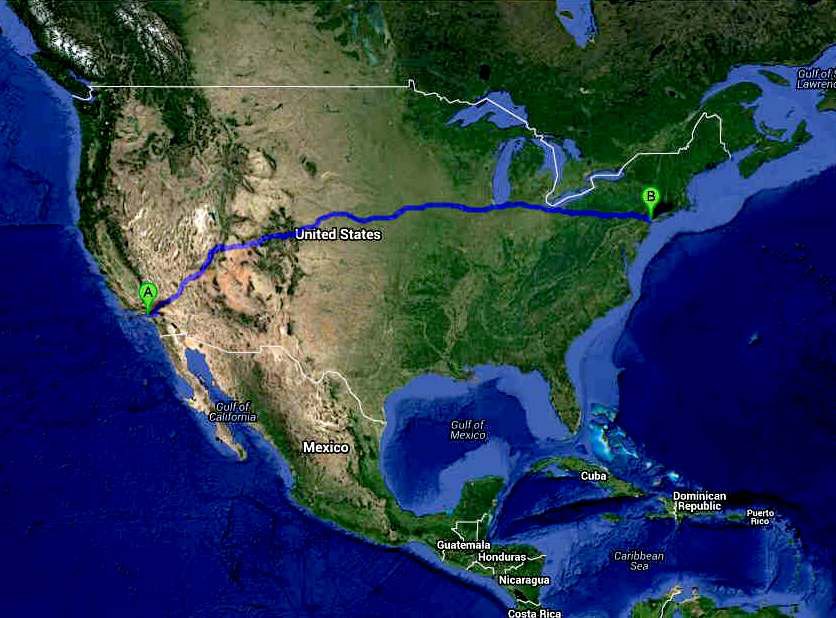Moving From New York to Los Angeles
New York City to Los Angeles

- N.Y.C to L.A is a Long Way
- Expenses May Be High
- Moving Authority is Here to Help
- Share Your Experience with Others
1. N.Y.C. to L.A. is a Long Way
Moving from New York City to Los Angeles can be a drastic change. The weather to the pace of life can take some getting used to. Because the USA is so large N.Y.C to L.A is a nearly 3,000-mile journey so it's important to not only plan ahead but to find the best moving company available to make sure everything you have sent travels smoothly from coast to coast.
2. Expenses May Be High
We understand that moving to Los Angeles from New York is expensive, and we do our best to link you with movers that are not only experienced in what they o, but cost effective as well. We pride ourselves on the relationships we have made, which are made up of the best commercial movers the industry has to offer. We have personally hand-picked expert movers who are knowledgeable in moving from Los Angeles from New York and they are available here in our listings on our site even if you are moving in with your partner. 
3. Moving Authority is Here to Help
Due to the stress that comes along with a long distance move, we make it as easy as possible for you to only focus on the destination that lies ahead, rather than all it takes to actually get there. Moving to Los Angeles from New York requires a professionally trained team that is skilled in this particular area to ensure that your items are transported safely while traveling so many miles away. Our goal is to make moving to Los Angeles from New York achievable without losing or damaging property, and without delaying moving schedules. A lot goes in to planning long distance relocations, such as moving to Los Angeles from New York, and we know the importance of staying on schedule. You can rest assured that with our services, we will only match you with the best, connecting you with the highest-rated, licensed movers in the business who will not only get the job done but will certainly surpass your expectations. 
4. Share Your Experience with Others
Knowing that your moving experience was an enjoyable one is worth all the effort it takes to make your move a success. Additionally though you may have shown up here with the idea of moving from New York to LA it would be advised that you consider our showcase of the best cities to live in the united states which actually showcases many of the other places that people like to move, many may be more effective from a price of living standpoint as well.
Comments
Nikky T
Feb. 23, 2022, 12:38 a.m.
Good Day, How long in advance would I have to book a big move like this from New York to Los Angeles, and would it be cheaper to book long in advance?
Janice Par
Feb. 23, 2022, 12:38 a.m.
I'm planning to move across the country but I'm thinking that moving on my own will be a nightmare. Are there any discounts on cross country moves or are there any companies who are able to do this for a relatively low price? A lot of companies that I have come across are charging way too much for my budget at the moment. I may have to reconsider moving or just selling all my things and starting from scratch.
Add Comment